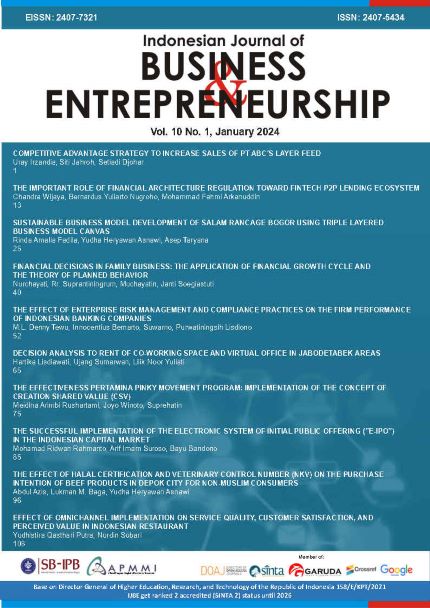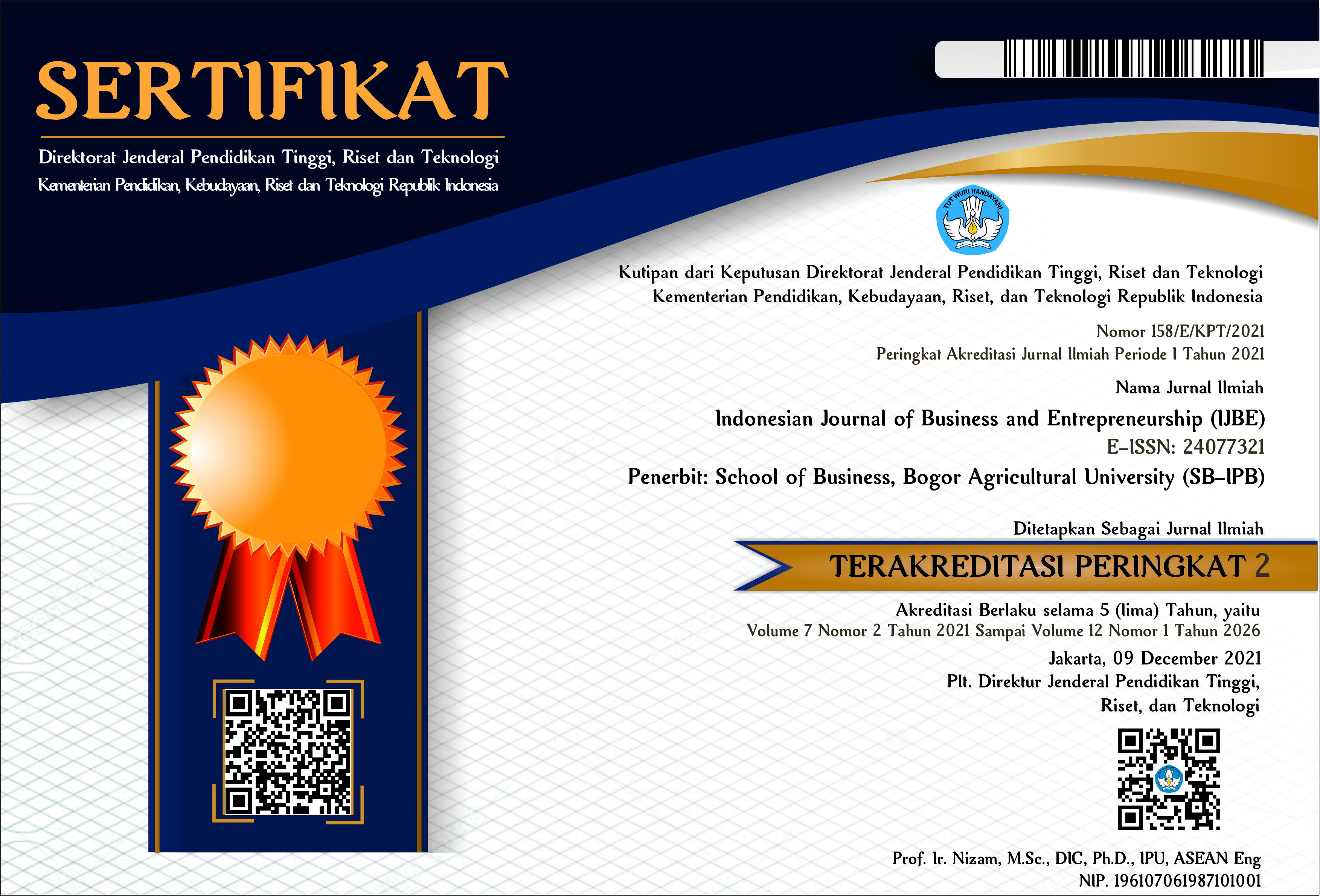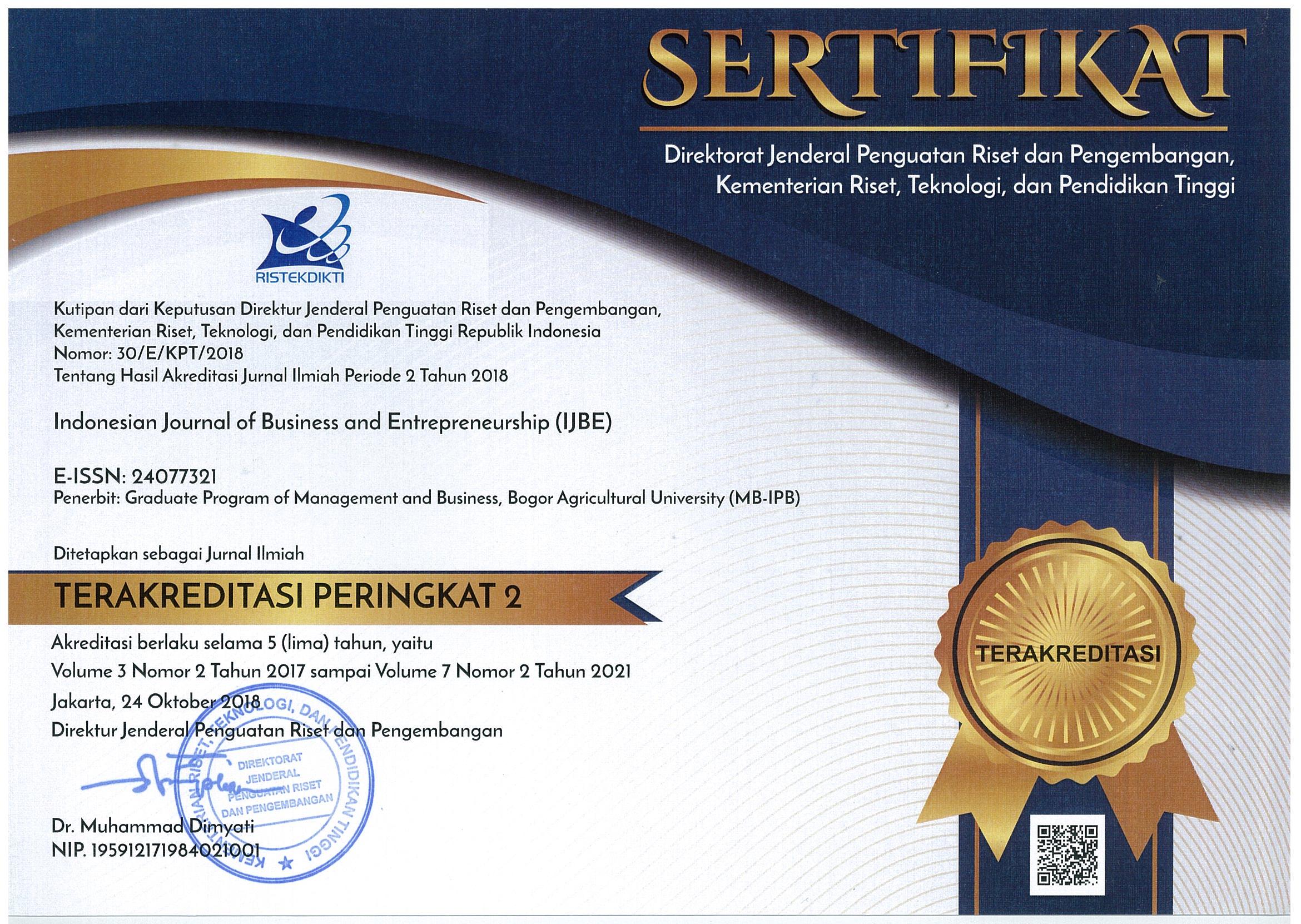The Determinants of Behavioral Intention and Use Behavior of QRIS as Digital Payment Method Using Extended UTAUT Model
Abstract
The development of QR code payment services by various fintech companies in Indonesia prompted Bank Indonesia to issue a Quick Response Indonesian Standard (QRIS) to support transactions that were safer, easier, faster, and more efficient. This study aimed to analyze the consumer preferences and factors that influenced their intention and use behavior when using QRIS in the Jabodetabek area. The extended Unified Theory of Acceptance and Use of Technology (UTAUT) model was employed to analyze these aspects. This research was conducted from March 2023 until May 2023. Online questionnaires were distributed to 198 respondents who were users of e-wallets or mobile banking and knew about the QRIS feature. Then, the collected data were analyzed using Structural Equation Modelling – Partial Least Square (SEM-PLS). The findings revealed that perceived risk, performance expectancy, social influence, and effort expectancy had a significant positive effect on the behavioral intention to use QRIS. Meanwhile, QRIS usage behavior was positively influenced by both behavioral intentions and facilitating conditions. The priority strategy that could be implemented to enhance the adoption of QRIS was by educating the role of QRIS in reducing payment risks.
Keywords: extended UTAUT, fintech adoption, QR code payment, QRIS, SEM-PLS









